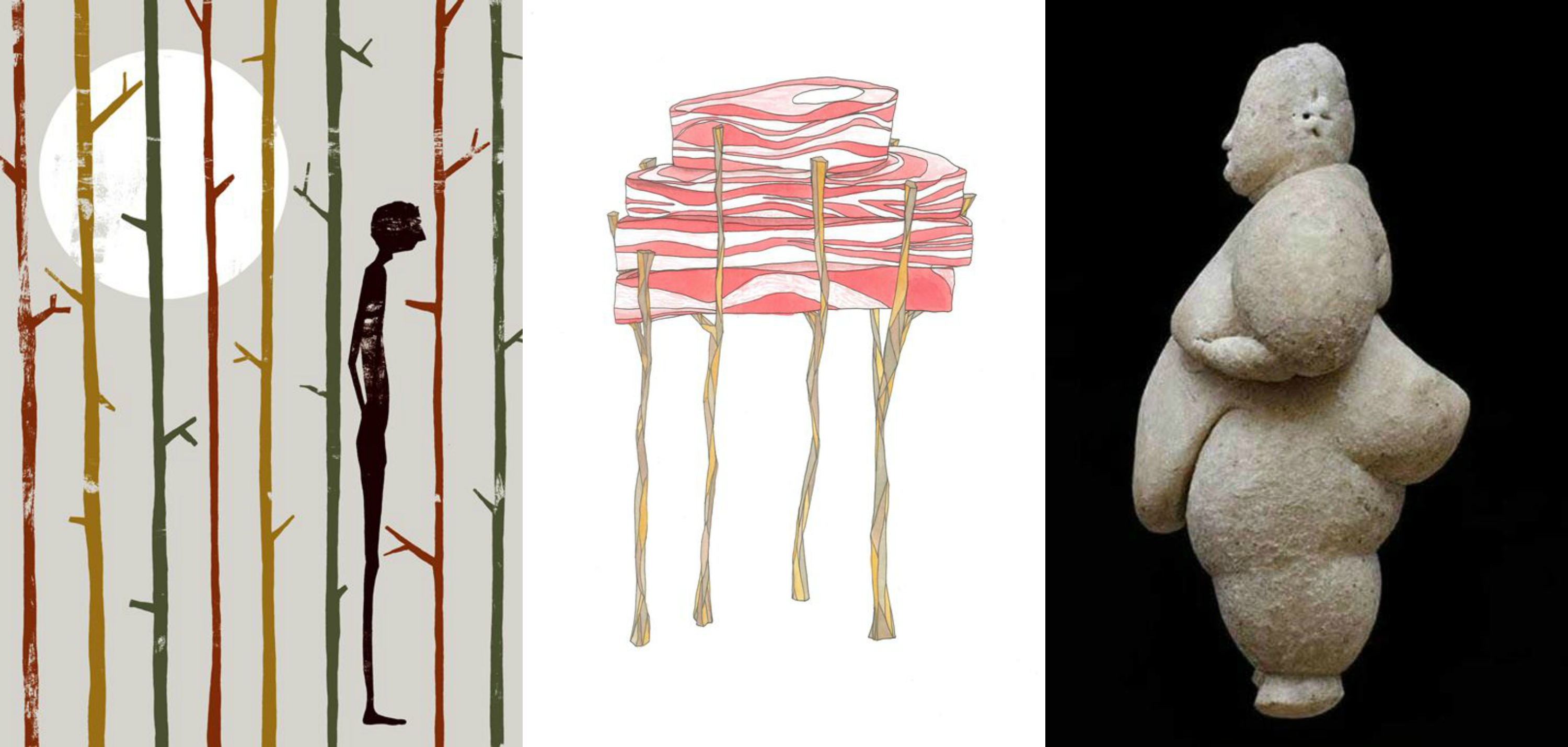Should we eat red meat? Depends on who’s eating—New York Times
- From
-
Published on
22.01.19
- Impact Area

Left to right: Figure of an under-nourished individual (by The Twin Project), illustration of red meat (by Kristy Modarelli) and an 8,000-year-old figure of an over-nourished individual (excavated from an archeological site in Turkey).
A particularly sane, sensible and equitable news report—one that takes an uncommon global perspective about optimal meat consumption—reviews recent diet guidelines recommended by some of the world’s foremost scientists in diet-, health- and environment-related fields and published in a leading medical journal.
This news report appeared recently in the New York Times, written by Somini Sengupta, a Calcutta-born journalist at the Times. Here’s what she says.
‘A report in the medical journal The Lancet suggests far less red meat for people who eat a lot of it, like Americans and Canadians, but not the world’s poor.
What should we eat?
Depends on who is eating.
‘That’s one of the principal conclusions of a comprehensive report that sets out targets on how to feed the world in a way that’s good for human health and the health of the planet. Its lightning-rod recommendation is around beef and lamb, the two forms of livestock that require enormous amounts of land and water and produce heaps of methane.
The report suggests a dramatic reduction in red meat consumption for people who eat a lot of it, like Americans and Canadians, but not the world’s poor, who need more animal protein for better health—like children in South Asia.
‘Written by 37 scientists from 16 countries and published Wednesday in the medical journal The Lancet, in conjunction with an advocacy group called the EAT Forum, the report . . . [also] calls for curbing food waste, a major source of greenhouse gas emissions, and overhauling agriculture so it doesn’t worsen deforestation and the depletion of scarce water.
‘“It’s not a blanket approach, but when you look at the data there are certain individuals or populations that don’t need that much red meat for their own health,” said Jessica Fanzo, a professor of food policy at Johns Hopkins University and a co-author of the report.
“There’s a real inequity. Some people get too much. Some people get too little.”
People in North America eat more than 6 times the recommended amount of red meat, the report said, while countries in South Asia eat half of what’s recommended.
‘Agriculture accounts for roughly a quarter of all greenhouse gas emissions, much of them produced by the raising of cattle and lamb. With the world’s population projected to rise to 10 billion by 2050 and prosperity allowing many more people to afford meat and dairy, scientists and policymakers are paying more attention to the question of feeding the planet without destroying it. . . .
‘The Lancet report pointed to a broader problem of disparity: More than 800 million people don’t get enough to eat worldwide, the report noted, and many more “consume low-quality diets that cause micronutrient deficiencies and contribute to a substantial rise in the incidence of diet-related obesity and diet-related noncommunicable diseases.”. . .’
Read the whole article by Somini Sengupta in the New York Times: New diet guidelines to benefit people and the planet: More greens for all, less meat for some, 16 Jan 2019.
![]()
Related news
-

Australia partners with International Livestock Research Institute to upskill researchers from Africa and Asia
International Livestock Research Institute (ILRI)13.11.25-
Food security
-
Poverty reduction, livelihoods & jobs
Australia has joined forces with the International Livestock Research Institute (ILRI) to support th…
Read more -
-

Next-gen rice lines top check varieties at 7.5 t/ha in ESA
International Rice Research Institute (IRRI)11.11.25-
Food security
MOROGORO, Tanzania (8 October 2025) — Elite rice lines are outperforming the current popular varie…
Read more -
-

QTL Profiling Now Live on EBS
International Rice Research Institute (IRRI)11.11.25-
Food security
QTL profiling is now integrated into the EBS Platform’s MDA module. Teams across CGIAR research…
Read more -
